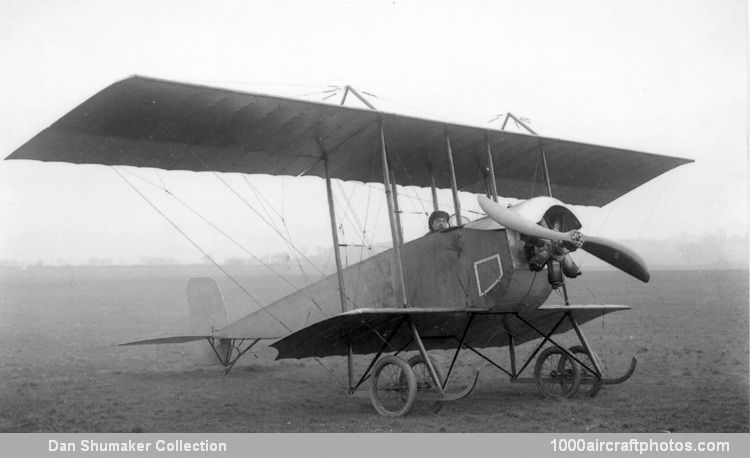A Grahame-White tractor biplane was specifically built for that purpose in 1913, and was composed mainly of the fuselage from a Morane-Saulnier monoplane, which was combined with the upper and lower wings of a Popular pusher biplane. The rather quaint-looking result of these machinations was designated Lizzie and known also as "The Teatray". The aircraft retained the Morane type of tail unit and was without fixed fin and tail plane. The front of the fuselage was covered with plywood, fabric being used over the rest of the airframe. The gap between the wings was the unusually large one of 6 ft 3 in (1.91 m), and contributed to the oddity of Lizzie's appearance. The substantial overhang of the upper wings of the Popular was another feature of the design. The engine was a semi-cowled 50 hp Gnome which turned a 7 ft 6 in (2.29 m) diameter propeller.
Lizzie's debut at Hendon was made with success on November 22, 1913, when Louis Noel flew it to win the 16 miles cross-country handicap race, and the machine continued to give exhibitions in the hands of Louis Strange and Reginald Carr (pictured here in the cockpit). For Carr's demonstrations of looping, modifications were carried out early in 1914. The lower wings were extended until they were nearly as great in span as the upper surfaces, and outer pairs of interplane struts were added to transform the wings from single-bay into two-bay cellules. Although the large gap remained, the alterations did much to make Lizzie's appearance more conventional."
